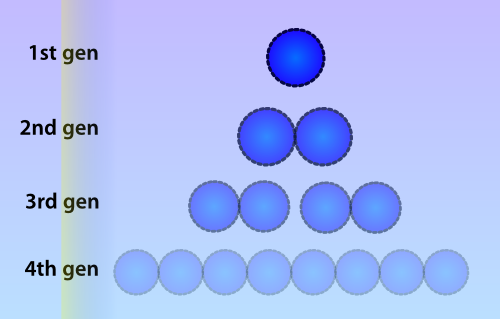Team:Amsterdam/project/applications/main applications
From 2012.igem.org
(Difference between revisions)
| Line 39: | Line 39: | ||
<h4>Compound Emission Detection at Industrial Sites</h4> | <h4>Compound Emission Detection at Industrial Sites</h4> | ||
The Cellular Logbook can be used at fabrics to measure compound emission. During a talk with Bart van den Burg from the company Biodetection Systems[http://www.bds.nl/], who currently use bioassays to detect compounds in samples, we came to the realization that the Cellular Logbook can be used as a cheap detection system for compound emission of industrial sites. If the Cellular Logbook cells are captured in a system that prevents them from being released in the environment, the Cellular Logbook can be placed at multiple locations, after which they are able tell us where, when and in what concentration a certain chemical has been detected. | The Cellular Logbook can be used at fabrics to measure compound emission. During a talk with Bart van den Burg from the company Biodetection Systems[http://www.bds.nl/], who currently use bioassays to detect compounds in samples, we came to the realization that the Cellular Logbook can be used as a cheap detection system for compound emission of industrial sites. If the Cellular Logbook cells are captured in a system that prevents them from being released in the environment, the Cellular Logbook can be placed at multiple locations, after which they are able tell us where, when and in what concentration a certain chemical has been detected. | ||
| + | |||
| + | <h1>Global Challenges</h1> | ||
| + | We took the global challenges as given by The Millenium Project[http://www.millennium-project.org/millennium/challeng.html] to show what the Cellular Logbook can contribute to worldwide societal problems. As a result we have identified four challenges where the Cellular Logbook is able to significantly contribute to the solution. | ||
| + | |||
| + | <h4>How can everyone have sufficient clean water without conflict?</h4> | ||
| + | One of the main problems in 3rd world countries concerning clean water supplies, apart from the cleaning of the water, is the detection of contaminated water. The Cellular Logbook can serve as a multi-sensor that comprises all the common causes for contaminated water in the 3rd world. Using this multi-sensor we have a cheap and efficient way of detecting contaminated water that is affordable in 3rd world countries. | ||
| + | |||
| + | <h4>How can the threat of new and reemerging diseases and immune micro-organisms be reduced?</h4> | ||
| + | Our multi-sensor can be used to detect these diseases but also to monitor places at risk. Since it can be adapted to use any sensor it can be used to effectively scan for several threats. And being inside a live organism our logbook provides a longer measurement instead of just capturing a single moment. Thus giving a much better insight into the situation at hand. | ||
| + | |||
| + | <h4>How can growing energy demands be met safely and efficiently?</h4> | ||
| + | Using the Cellular logbook adapted to any specific waste or other suspected threats produced when this energy demand is met, it can efficiently provide a means for safer outcome. | ||
| + | |||
| + | <h4>How can scientific and technological breakthroughs be accelerated to improve the human condition?</h4> | ||
| + | By using our Cellular logbook platform as described for the Debugger. Using the Debugger can provide much faster insight when testing pathways or if you just want to find out whether or not your system is working. These fast means of insight can generate a new bundle of information and save precious time for any researcher. | ||
| + | |||
</div> | </div> | ||
</div> | </div> | ||
{{Team:Amsterdam/Foot}} | {{Team:Amsterdam/Foot}} | ||
Latest revision as of 14:49, 24 September 2012
 "
"






